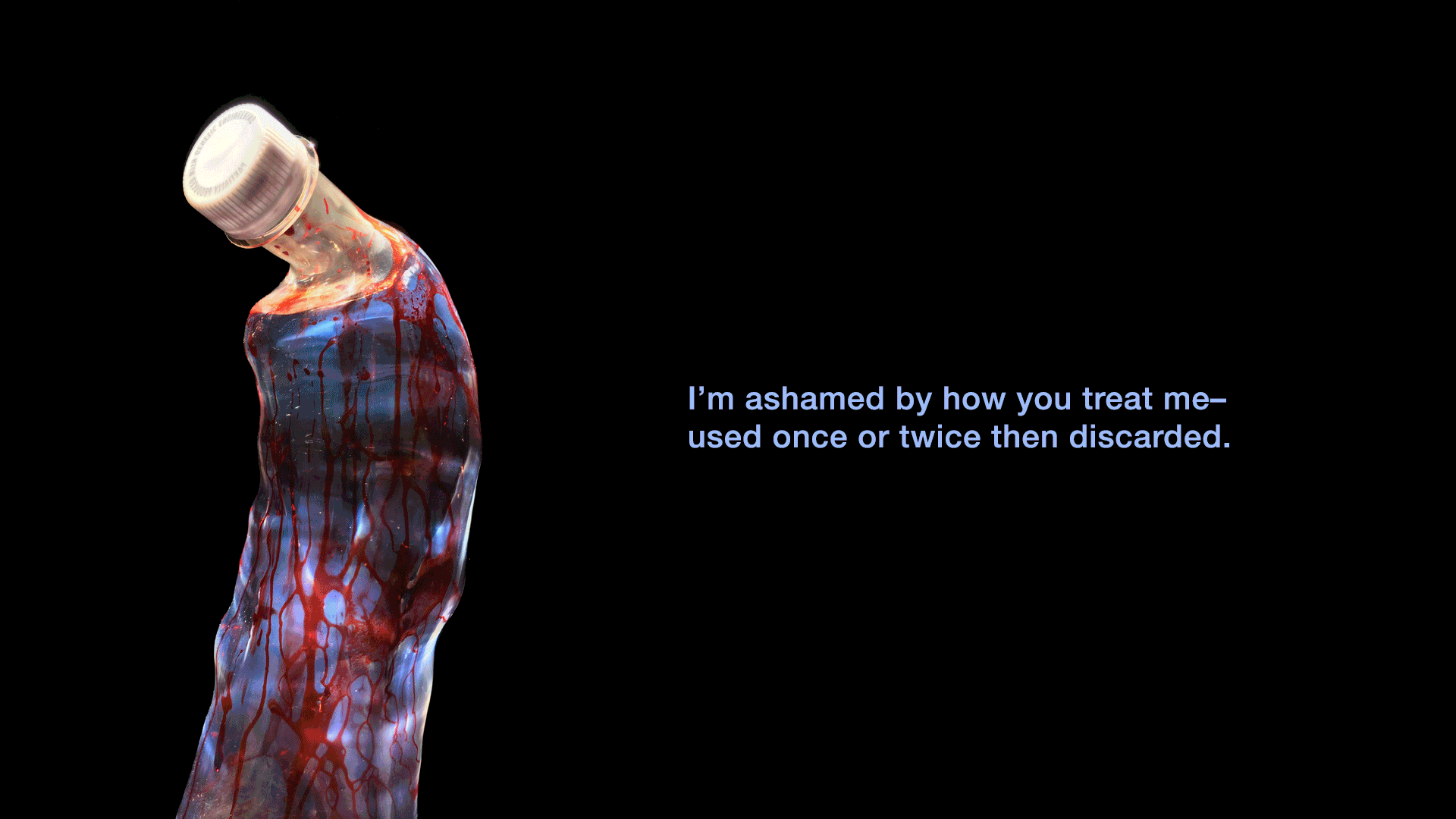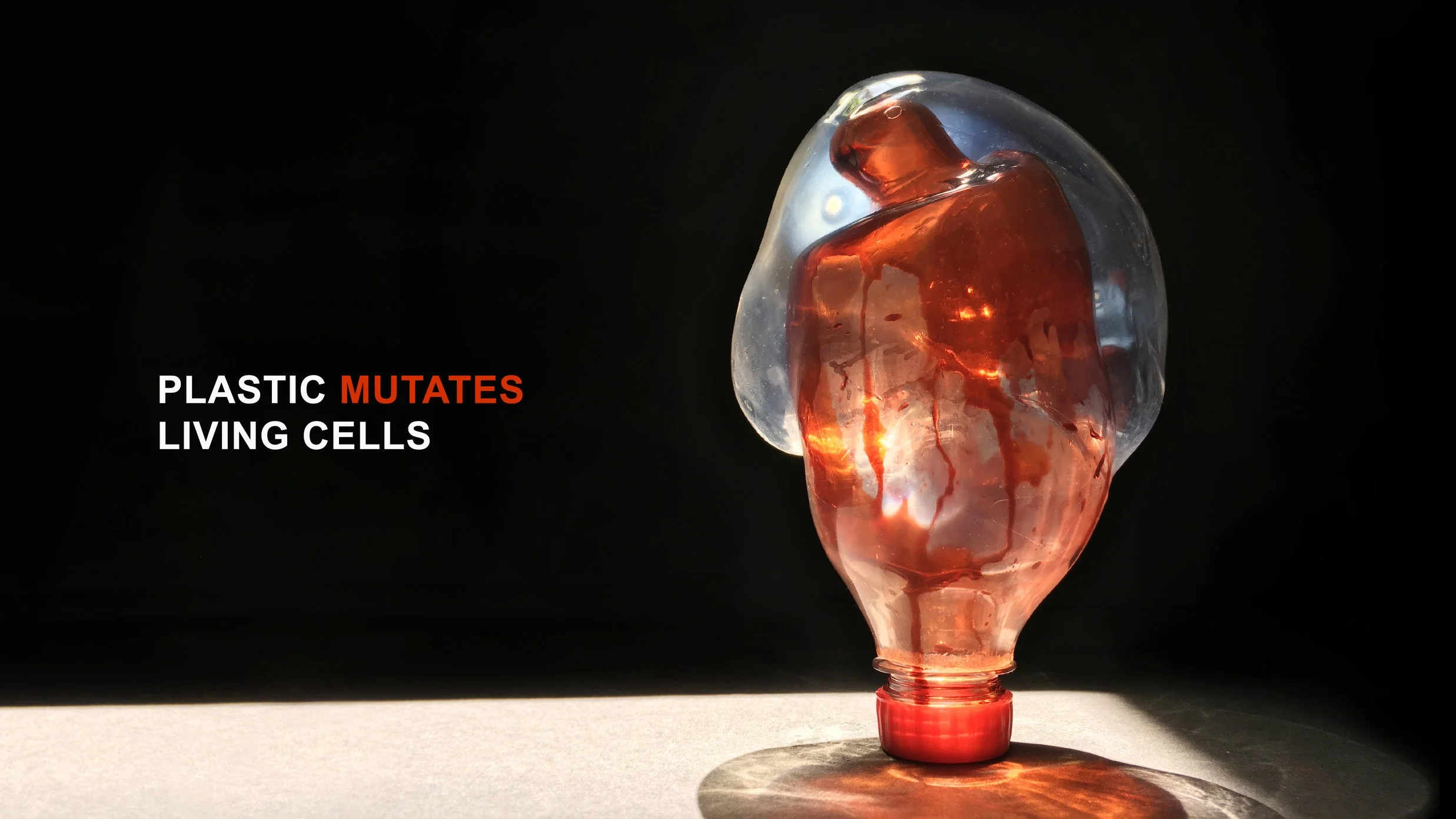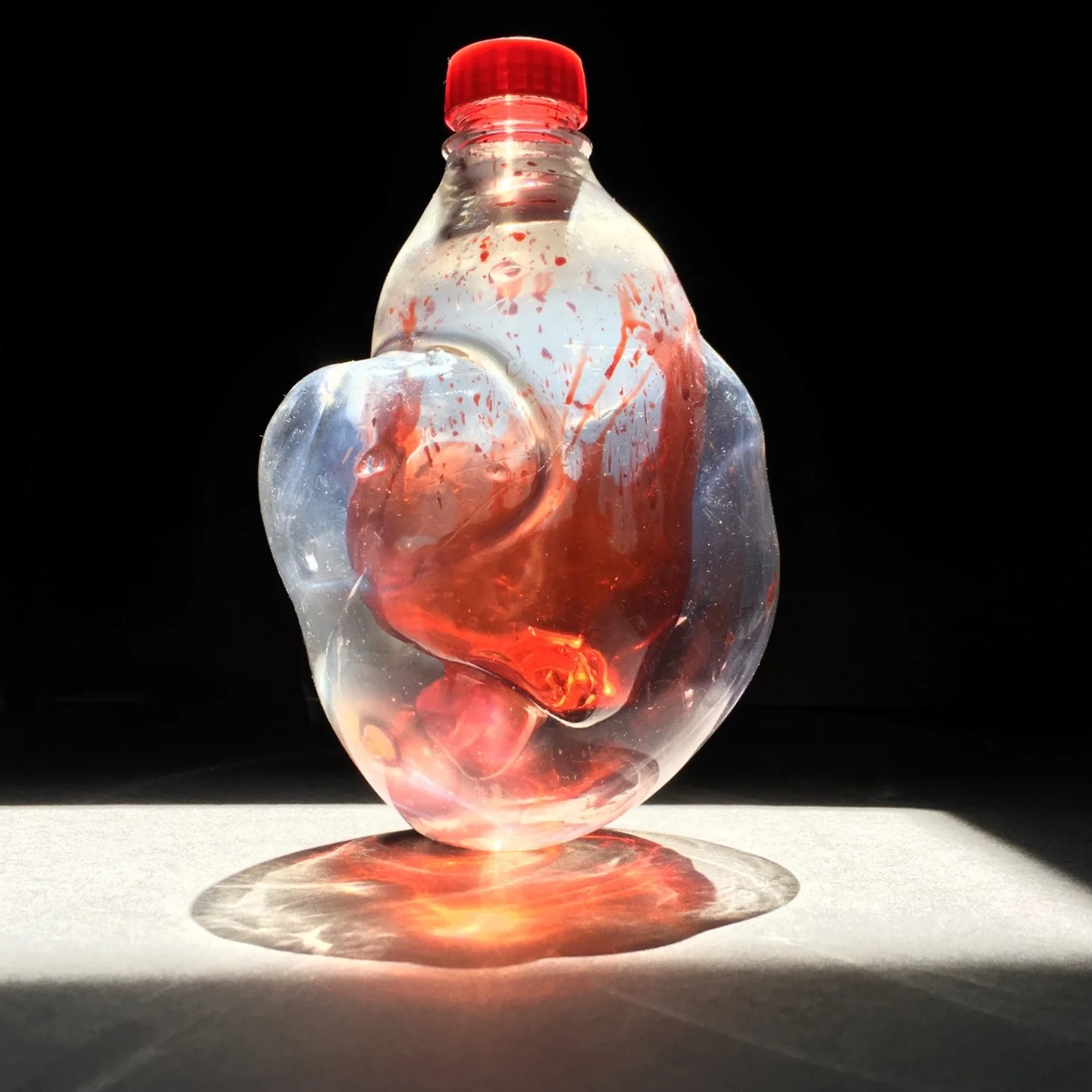Bottleneck is a series of visual narratives that provoke an examination of our relationship to plastic bottles. Shown in various poses, gestures, and forms, the main actor in Bottleneck is the ordinary plastic beverage bottle– polyethylene terephthalate (PET). This series commemorates the 50 year anniversary that has bonded people, PET plastic, and the planet.
The main problem is not plastic, it's how we treat it.
We are literally eating and drinking microplastic.
It’s a marvel of modern engineering that every second we are able to produce 20,000 bottles globally. Fortunately, these bottles (and many other widely used products) are made from polymers that can be collected, processed, and remade into new products. But the rate of production is so efficient that it far exceeds our ability and infrastructure to collect and process it.
The perceived value of plastic is that it’s cheap, disposable, and recyclable. While Americans consumed 50 billion plastic water bottles in 2013, a whopping 38 billion never made it to recycling centers. That means that over than 3/4 of all bottles end up in landfill or the oceans where they will never separate into basic elements– carbon, oxygen, hydrogen, nitrogen, chlorine, or sulfur.
This beautiful material is so unforgivably durable, it’s a permanent fixture in our ecosystem. Discarded plastic will continually break down into smaller and smaller pieces– until it is so minuscule, that we can drink it without noticing. The smallest of micro-plastic particles pass through the filters that we use to purify our drinking water. What a journey– from our refrigerator to the ocean and back into our kidneys, liver, and internal organs. Quite simply, plastic is forever.





